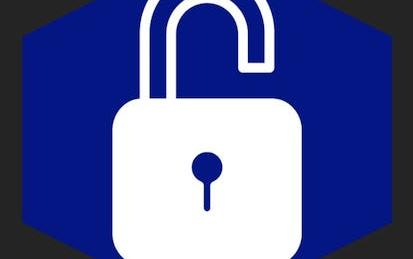

Our Courses

Introduction to Software Side Channels and Mitigations
Side channels exist in the real world, but they also exist in computers and can be exploited directly from software. This is a substantial computer security problem today, that we need to learn about to be able to stop attacks. In this course, you will learn and practice basic software-based side channels and understand the thought process to utilize a side channel. You will then learn how to mitigate or avoid side channels in software.
-
Course by

-
 Self Paced
Self Paced
-
 English
English

Cybersecurity Threat Vectors and Mitigation
This course provides a comprehensive overview of threat vectors and the strategies for mitigating them, and aims to equip you with the necessary skills and knowledge to safeguard against cyber threats. You’ll gain a deep understanding of the threat vectors used by attackers, discover encryption techniques, and explore different compliance concepts. This course will get you one step closer to the Microsoft Cybersecurity Analyst Professional Certificate, which requires no degree or prior experience.
-
Course by

-
 Self Paced
Self Paced
-
 20 hours
20 hours
-
 English
English

Climate Solutions
This short course has been designed by award-winning climate change experts and passionate educators to give you an insight into the greatest challenge of our era. Through completing the course, you'll gain a deeper understanding of core climate concepts such as mitigation, adaptation, climate justice, carbon footprinting, net zero and solutions frameworks. We'll look at some of the key players in crafting solutions, such as governments, big business – and you!
-
Course by

-
 Self Paced
Self Paced
-
 7 hours
7 hours
-
 English
English

Real-Time Cyber Threat Detection and Mitigation
This course introduces real-time cyber security techniques and methods in the context of the TCP/IP protocol suites. Explanation of some basic TCP/IP security hacks is used to introduce the need for network security solutions such as stateless and stateful firewalls. Learners will be introduced to the techniques used to design and configure firewall solutions such as packet filters and proxies to protect enterprise assets. Perimeter solutions such as firewalls and intrusion prevention systems are shown to have significant drawbacks in common enterprise environments.
-
Course by

-
 Self Paced
Self Paced
-
 15 hours
15 hours
-
 English
English

Disaster Preparedness
Have you ever viewed a news report depicting the aftermath of a devastating natural disaster? The damage to human life and property are both staggering and heartbreaking. All parts of the world face the possibility of floods, hurricanes, tornados, fires, landslides, earthquakes, tsunamis, and other natural phenomena. Are you prepared if disaster would strike you? This course will help you prepare! The course is appropriate for any learner who is proactive about developing the core competencies of disaster readiness and survival planning.
-
Course by

-
 Self Paced
Self Paced
-
 13 hours
13 hours
-
 English
English

Tropical Forest Landscapes 101: Conservation & Restoration
Conserving and restoring tropical forest landscapes offers an opportunity to address pressing environmental and social challenges. Effective conservation and restoration initiatives support multiple objectives, including ecosystem functioning, climate change mitigation and adaptation, food security, and economic growth. This seven-week course explores the technical, social, and funding aspects of this timely topic. You will learn: 1. The importance of tropical forest landscapes and the actors and motivations driving restoration and conservation efforts. 2.
-
Course by

-
 Self Paced
Self Paced
-
 20 hours
20 hours
-
 English
English

AI and Disaster Management
In this course, you will be introduced to the four phases of the disaster management cycle; mitigation, preparation, response, and recovery. You’ll work through two case studies in this course. In the first, you will use computer vision to analyze satellite imagery from Hurricane Harvey in 2017 to identify damage in affected areas. In the second, you will use natural language processing techniques to explore trends in aid requests in the aftermath of the 2010 earthquake in Haiti.
-
Course by

-
 Self Paced
Self Paced
-
 12 hours
12 hours
-
 English
English

Software Design Threats and Mitigations
The design step in developing software has some unique characteristics. First of all, it’s the only step where drawing pictures of things is the norm. Why is that? What do pictures do that other representations cannot do? Pictures have varying levels of detail; pictures have context. Pictures…paint a picture. Why are these things important? In this course, too, we begin looking at other disciplines (building architecture is a favorite one) for lessons on design.
-
Course by

-
 Self Paced
Self Paced
-
 19 hours
19 hours
-
 English
English

Exploiting and Securing Vulnerabilities in Java Applications
In this course, we will wear many hats. With our Attacker Hats on, we will exploit Injection issues that allow us to steal data, exploit Cross Site Scripting issues to compromise a users browser, break authentication to gain access to data and functionality reserved for the ‘Admins’, and even exploit vulnerable components to run our code on a remote server and access some secrets. We will also wear Defender Hats. We will dive deep in the code to fix the root cause of these issues and discuss various mitigation strategies.
-
Course by

-
 Self Paced
Self Paced
-
 24 hours
24 hours
-
 English
English

Mitigating Security Vulnerabilities on Google Cloud
In this self-paced training course, participants learn mitigations for attacks at many points in a Google Cloud-based infrastructure, including Distributed Denial-of-Service attacks, phishing attacks, and threats involving content classification and use. They also learn about the Security Command Center, cloud logging and audit logging, and using Forseti to view overall compliance with your organization's security policies.
-
Course by

-
 Self Paced
Self Paced
-
 6 hours
6 hours
-
 English
English

Detecting and Mitigating Cyber Threats and Attacks
Computer attacks and data breaches are inevitable. It seems like every day a data breach occurs and the victims of the data breach suffer. Their information is stolen or posted online. The company’s or businesses who had the breach go on, learn a little from the attack, and just give credit monitoring out as if nothing happened. What if you could help prevent a data breach in your organization? This is the third course in the Practical Computer Security specialization.
-
Course by

-
 Self Paced
Self Paced
-
 12 hours
12 hours
-
 English
English



